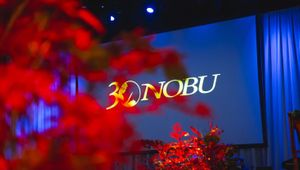
The E Factor: The Next Frontier in Understanding Impact

As the advertising industry returns from its annual pilgrimage to the Cannes Lions International Festival of Creativity, I’m reminded of an expression often attributed to Maya Angelou. It goes, “People will forget what you said, people will forget what you did, but people will never forget how you made them feel.” It speaks to a central truth in life and advertising: human behaviour is driven by emotion. After all, 90% of consumer decisions are made on the subconscious level.
Great advertisers, especially the award-winning creatives in Cannes, understand this. For decades, brands have wielded the power of pathos—encouraging us to challenge gender stereotypes as Always did in its ‘Like a Girl’ campaign, or reminding us that small gestures go a long way as Coca-Cola did in its ‘Share a Coke' ads, or simply cracking us up like Cheetos did by pointing out the “Can’t Touch This” effect of orange-stained fingers.
And yet, although we know instinctively that generating emotion is a prerequisite for creating impact, there hasn’t been a reliable way to quantify the relationship between emotion and impact. Until now.
The Four Drivers of Impact
In the premium video landscape, advertisers have long sought to tie ad spots to outcomes. To help, NBCUniversal has established four conditions that must be met to drive impact for advertisers.
- First, we must be able to accurately count the investment and the delivery of audiences across all screens. This includes measuring reach, frequency, and impressions.
- Second, we need to understand the quality of the ad environment. To be effective, ads must air in an uncluttered and brand-safe environment with impactful, innovative ads.
- Third, we need to understand how the content that airs alongside a given ad resonates with consumers, which is why we announced the Content Quality Index.
- Finally, we need to understand the E Factor, or an ad’s ability to solicit an emotional response.
That is why last year at Cannes, our team announced it would examine the relationship between emotional response and impact. Now, we’re sharing our results.
How Emotion Impacts Search Intent
Over the past year, we’ve worked with Dumbstruck, an analytics company that gauges emotional resonance by capturing 10,000 facial movements. As part of our study, we selected new pieces of creative across three categories: Tech, QSR, and Retail. We measured the reactions of nearly 50,000 viewers to every single frame of content for each ad. Then, with the help of EDO, a company that measures predictive behaviours driven by convergent TV advertising, we examined the correlation between emotional resonance and search lift, a key KPI.
The results could not be more fascinating. For each category we tested, we saw strong correlations between specific patterns of emotional response and corresponding intent to search the brand or product. Emotional responses that reliably drove search intent, included Attention Concentration, which captures the viewer’s cognitive engagement, and their ability to process and retain information over the course of an ad; Intensity Average, which tells us the power of viewers’ positive emotional response for the duration of the ad; and finally, Ad Likeability. This one speaks for itself, but it covers the degree to which viewers state a particular ad resonates with them.
Going beyond metrics, we gained more insight into the relationship between emotion and search behaviour. Critically, we discovered a very weak link between short-term actions like search and long-term outcomes like brand affinity. In a lot of ways, this makes sense. Search is a proxy for consideration, which is a rational behaviour. But affinity, or brand love, may not be rooted in logic at all. This dichotomy presents a stark choice for marketers: do we design for short-term lead generation, or invest in long-term brand building?
We also observed a difference in how effective specific creative elements were in eliciting emotions across categories. For example, in tech, showcasing product features, instead of people, helped drive interest. Incentives and limited-time offers worked best for retail. QSR realised search lifts when its ads focused on menu items and pricing, but mood-altering creative forms built stronger long-term attachments.
As promising as these results are, human emotions are extraordinarily complex. To truly dissect and unpack all the feelings that go into spurring action, we need to measure more than an individual ad’s emotional firepower.
Ultimately, advertisers willing to explore emotional measurement will not just move their audiences; they’ll see first-mover advantages and amplify their impact. In other words, at Cannes Lions, no category explicitly awards ads for having the greatest emotional impact. But really, you can’t win a Lion—or the attention of consumers—without it. It’s time to start measuring what matters, including the emotions that tell us what matters to our viewers.















